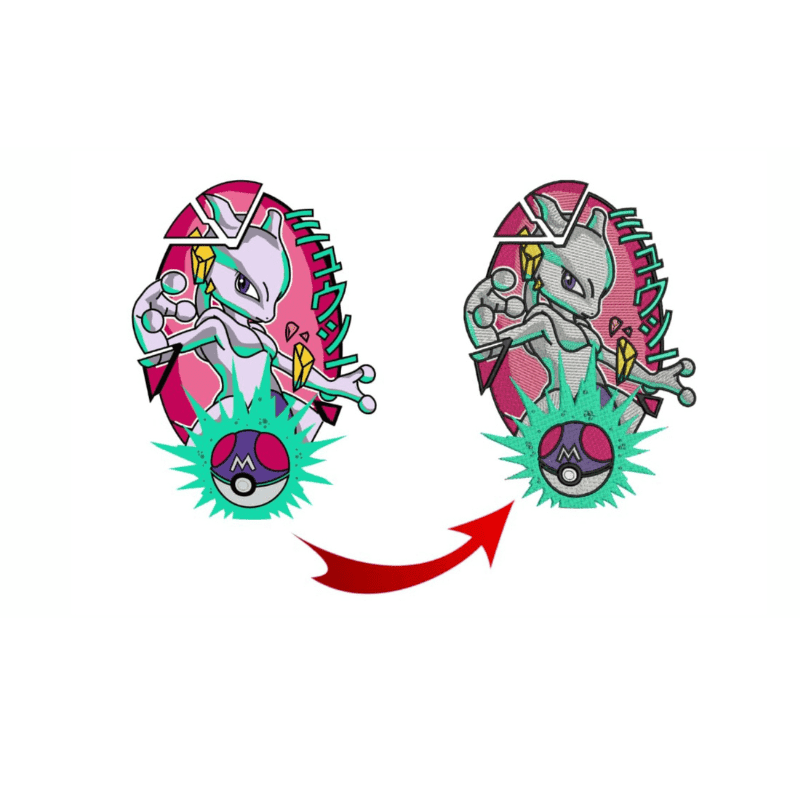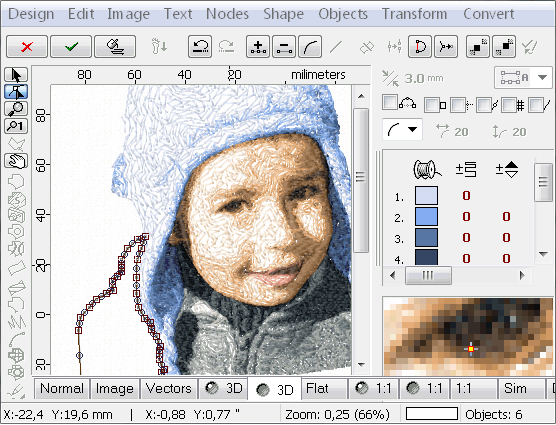Professional Digitizing for Embroidery: High-Quality Designs
Professional Digitizing for Embroidery: High-Quality Designs
Blog Article
Discover Different Kinds Of Embroidery Digitizing Techniques
Embroidery digitizing has actually advanced considerably over the years, supplying a myriad of techniques to bring styles to life in the electronic realm. The realm expands to a lot more advanced techniques like photorealistic needlework digitizing and the fascinating world of 3D needlework digitizing.
Standard Hand Needlework Digitizing
Conventional hand needlework digitizing involves the procedure of converting elaborate hand-stitched layouts right into digital styles for equipment embroidery. This method calls for knowledgeable craftsmens to meticulously analyze the handcrafted design and after that make use of specialized software program to recreate it in an electronic format. Each stitch, shade, and detail needs to be carefully equated to ensure that the essence of the original hand needlework is maintained in the digital variation.
One of the vital difficulties of typical hand embroidery digitizing is capturing the complexities and subtleties of the handmade design. Digitizing for Embroidery. Artisans should have a deep understanding of various needlework strategies, such as satin stitch, chain stitch, and French knots, to properly replicate these methods in the electronic realm. Furthermore, they require to have a keen eye for detail to make sure that the electronic layout keeps the same degree of artistry and workmanship as the original hand-stitched piece
Punching Method
To perfectly transition from typical hand embroidery digitizing to the boxing method, artisans need to now concentrate on converting the complex digital layouts into guidelines that embroidery devices can analyze. The punching strategy involves making use of specialized software to create digital documents that contain commands for the needlework maker to follow. This procedure calls for a deep understanding of not just the layout itself but also the capabilities and restrictions of the needlework maker.

Auto-Digitizing Software Application Programs
Embroidery digitizing has been reinvented by the advent of auto-digitizing software programs, supplying craftsmens with innovative devices to convert digital styles right into embroidery equipment directions efficiently. Auto-digitizing software application programs use algorithms to assess digital pictures or vector documents and generate needlework layouts automatically. These programs enable fast and accurate conversion of complex designs into stitch patterns, conserving effort and time for embroiderers.
Among the essential benefits of auto-digitizing software is its easy to use user interface, making it obtainable to both newbies and seasoned digitizers. These programs often include features such as stitch modifying tools, thread shade matching, and the capacity to sneak peek the final stitched layout. Additionally, auto-digitizing software application can take care of intricate designs with several colors and intricate information, generating top notch needlework data ideal for various apparel and fabric tasks.
While auto-digitizing software uses comfort and effectiveness, it is crucial for users to understand the restrictions of automated digitizing. Fine-tuning and hands-on modifications may still be called for to achieve the see this desired embroidery top quality, especially when handling complex or unique styles. By leveraging the capabilities of auto-digitizing software together with manual digitizing methods, craftsmens can enhance their embroidery digitizing process and develop magnificent stitched items.
Photorealistic Embroidery Digitizing
Utilizing advanced digital imaging techniques, achieving photorealistic results in embroidery digitizing has actually become a desired skill amongst modern craftsmens. This strategy includes transforming high-resolution pictures into complex stitch patterns that closely simulate the initial style, causing embroidery items that display natural detail and deepness.
To achieve photorealistic needlework digitizing, artisans need to have a keen eye for information and a complete understanding of just how different stitch types and thickness can affect the final end result. By carefully mapping out each color and shade in the image, embroiderers can produce a digital data that overviews the needlework maker to reproduce the subtleties of the initial image accurately.
Photorealistic embroidery digitizing is especially popular in creating customized styles for clothing, home style, and art items where recording the significance of a picture or art work is crucial. This technique allows artisans to transform memories, landscapes, portraits, and elaborate art work into magnificent stitched work of arts that display this contact form a mix of typical craftsmanship and advanced modern technology.
3D Embroidery Digitizing
With the improvement of electronic imaging strategies in attaining photorealistic lead to embroidery digitizing, the expedition of 'D Embroidery Digitizing' provides a new dimension to the ins and outs of layout duplication. 'D Embroidery Digitizing' describes the three-dimensional digitizing technique that includes deepness and appearance to needlework styles, developing a much more reasonable and visually appealing final product. This method makes use of software application that mimics the result of light and darkness on the needlework layout, improving its general visual effect.
Among the crucial benefits of 'D Embroidery Digitizing' is its capability to make designs look more natural and vibrant. By including depth to the needlework layout, the end product appears more practical and exciting (Digitizing for Embroidery). Furthermore, this method permits even more imaginative flexibility in style execution, enabling embroiderers to trying out different structures and impacts that were previously testing to attain
Final Thought

Report this page